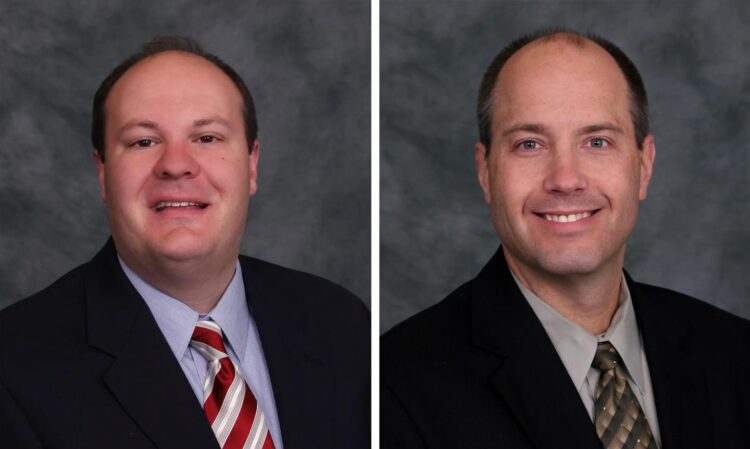Study shows prepopulating forms increases reporting rates for notifiable conditions

Credit: Regenstrief Institute
INDIANAPOLIS — Disease tracking is an important area of focus for health departments in the midst of the COVID-19 pandemic. A new study from Regenstrief Institute and Indiana University shows that using electronic health information exchanges (HIE) to prepopulate forms for notifiable disease reports increases reporting and completeness of information.
Typically, health departments wait for hospital, laboratory or clinic staff members to initiate the report, and it is commonly done by fax. This process can be burdensome to those charged with filing the paperwork and the public health officials who analyze it, leading to delays or gaps in reporting.
“Surveillance is the cornerstone of public health,” said Brian Dixon, PhD, MPA, study first author and director of public health informatics at Regenstrief Institute and Indiana University Richard M. Fairbanks School of Public Health at IUPUI. “The traditional way of reporting can potentially lead to delays in identifying outbreaks. This clinical decision tool leverages information that already exists in the HIE to simplify the process of reporting, ultimately helping to make surveillance more complete to inform public health decisions.”
Using HIEs to facilitate reporting
The two-year controlled before-and-after trial analyzed reports submitted to a local health department for seven notifiable diseases. The research scientists compared “usual care,” which is the use of paper and fax reports, with HIE-generated forms. They found that provider reporting rates for chlamydia and gonorrhea increased significantly in clinics using the HIE-generated forms, and completeness significantly improved for 4 of the 15 information fields on the reporting forms.
In addition, 75 percent of cases reported by intervention clinics contained a prepopulated form, which indicates that clinics are willing to use the tool.
To create the forms, the research team designed a clinical decision support tool that is triggered when an electronic laboratory message is examined by the Regenstrief Notifiable Condition Detector. The system extracts data from the Indiana Health Information Exchange and fills in the information fields on the official state reporting form. The form is delivered to an ambulatory care clinic using the HIE network, acting as a reminder for the clinician or staff member to review and submit the form to the local health department.
“We know that filling out forms can be challenging for providers and their staff for many reasons,” said Shaun Grannis, M.D., M.S., senior author and vice president for data and analytics at Regenstrief. “Our solution facilitates public health reporting, which is crucial, while also allowing providers to do what they do best — providing care for their patients.” Dr. Grannis is also a professor of family medicine at Indiana University School of Medicine.
Benefits of HIEs and interoperability
The research team stressed the importance of continuing to build better integration between clinical and public health information systems.
“As demonstrated by the COVID-19 pandemic, timely and complete reporting is crucial to enable quick response to outbreaks that threaten the health of the public,” said Dr. Dixon. “As we continue to track the spread of COVID-19 and other diseases, interoperability will play a key role in informing decisions. The healthcare field must continue to push forward in its effort to refine technical and workflow processes to make public health surveillance more efficient.”
###
Improving Notifiable Disease Case Reporting Through Electronic Information Exchange Facilitated Decision Support: A Controlled Before-and-After Trial was published in the May/June edition of Public Health Reports.
In addition to Dr. Dixon and Dr. Grannis, other authors on the paper are Zuoyi Zhang, PhD of Regenstrief Institute; Janet N. Arno, M.D. of the Marion County (Indiana) Health Department and University of Washington School of Public Health; Debra Revere, MLS of University of Washington School of Public Health; Joseph Gibson, PhD, MPH of the Marion County (Indiana) Health Department.
More about Brian E. Dixon, MPA, PhD
In addition to his role as Regenstrief Institute and Indiana University Richard M. Fairbanks School of Public Health at IUPUI director of public health informatics, Brian E. Dixon, MPA, PhD, is a research scientist at Regenstrief and an associate professor of epidemiology at the Fairbanks School of Public Health. He is also an affiliate scientist at the U.S. Department of Veterans Affairs Health Services Research and Development Center for Health Information and Communication, Richard L. Roudebush VA Medical Center.
More about Shaun Grannis, M.D., M.S.
In addition to his role as the vice president of data and analytics at Regenstrief Institute, Shaun Grannis, M.D., M.S., is the Regenstrief Chair in Medical Informatics and a professor of family medicine at Indiana University School of Medicine.
About Regenstrief Institute
Founded in 1969 in Indianapolis, the Regenstrief Institute is a local, national and global leader dedicated to a world where better information empowers people to end disease and realize true health. A key research partner to Indiana University, Regenstrief and its research scientists are responsible for a growing number of major healthcare innovations and studies. Examples range from the development of global health information technology standards that enable the use and interoperability of electronic health records to improving patient-physician communications, to creating models of care that inform practice and improve the lives of patients around the globe.
Regenstrief Institute is celebrating 50 years of healthcare innovation. Sam Regenstrief, a successful entrepreneur from Connersville, Indiana, founded the institute with the goal of making healthcare more efficient and accessible for everyone. His vision continues to guide the institute’s research mission.
About the Richard M. Fairbanks School of Public Health at IUPUI
Located on Indiana’s premier research and health sciences campus, the Richard M. Fairbanks School of Public Health at IUPUI is committed to advancing the public’s health and well-being through education, innovation and leadership. The Fairbanks School of Public Health is known for its expertise in biostatistics, epidemiology, cancer research, community health, environmental public health, global health, health policy and health services administration.
About IU School of Medicine
IU School of Medicine is the largest medical school in the U.S. and is annually ranked among the top medical schools in the nation by U.S. News & World Report. The school offers high-quality medical education, access to leading medical research and rich campus life in nine Indiana cities, including rural and urban locations consistently recognized for livability.
Media Contact
Cindy Fox Aisen
[email protected]





